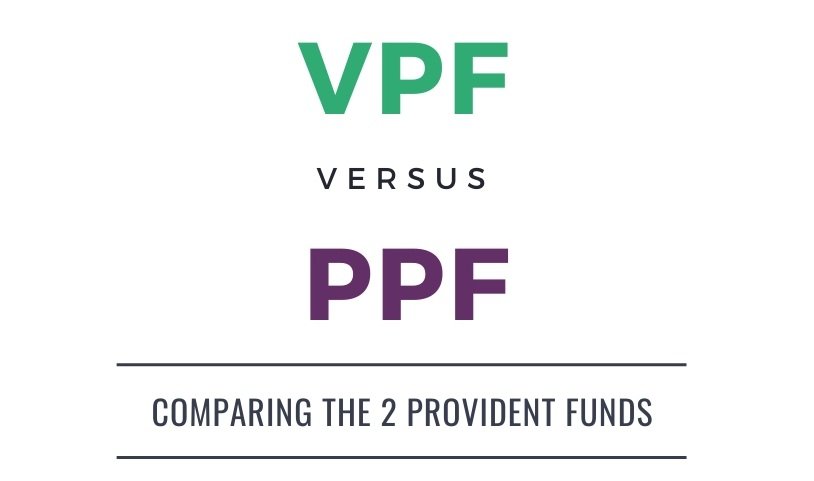
When it comes to long-term saving and investing, there are several schemes available for Indian citizens, two of which are highly popular – the Voluntary Provident Fund (VPF) and the Public Provident Fund (PPF). Both of these schemes aim to help individuals save for their future while providing tax benefits and safety. While both offer lucrative interest rates and tax-saving opportunities, they differ significantly in terms of their features, benefits, and suitability for different financial goals.
In this article, we’ll explore in detail the key differences, similarities, advantages, and disadvantages of VPF and PPF, helping you make an informed decision on which one might be more suitable for your financial situation.
What is VPF (Voluntary Provident Fund)?
The Voluntary Provident Fund (VPF) is an extension of the Employee Provident Fund (EPF) and allows salaried employees to contribute more than the mandatory 12% of their basic salary towards their retirement savings. The contributions to VPF are made voluntarily, and the interest earned is exempt from tax under Section 10(12) of the Income Tax Act.
Features of VPF:
- Contribution Limits: The employee can contribute any amount above the mandatory 12% of basic salary, depending on their capacity. This is a voluntary contribution, and it can be up to 100% of the basic salary.
- Interest Rate: The interest rate on VPF is the same as the rate offered under the EPF scheme, which is generally around 8-9% annually, as set by the Government of India.
- Tax Benefits: Contributions made to VPF are eligible for tax deduction under Section 80C of the Income Tax Act. Additionally, the interest earned on VPF is also tax-free, and the maturity amount is fully tax-exempt under Section 10(12).
- Risk Factor: VPF is backed by the Employee Provident Fund Organization (EPFO), which is a government body, making it a safe investment. It comes with a low-risk profile and guarantees returns.
- Withdrawal: The VPF can be withdrawn only when the employee retires or leaves their current employer. However, partial withdrawals are possible in case of certain conditions such as medical emergencies or educational expenses.
What is PPF (Public Provident Fund)?
The Public Provident Fund (PPF) is a government-backed savings scheme designed to encourage long-term savings. It is open to all Indian citizens, regardless of whether they are salaried or self-employed. Unlike VPF, PPF is not linked to an employer, and individuals can open a PPF account at any post office or designated bank branch.
Features of PPF:
- Contribution Limits: The minimum annual contribution to PPF is ₹500, and the maximum is ₹1.5 lakh. Contributions can be made in lump sums or in installments over the year, with a maximum of 12 contributions per year.
- Interest Rate: The interest rate on PPF is set by the Government of India every quarter, typically around 7-8% annually. This rate is fixed and compounded annually.
- Tax Benefits: Contributions made to PPF qualify for tax deductions under Section 80C of the Income Tax Act. The interest earned is tax-free, and the maturity amount is also tax-exempt.
- Risk Factor: PPF is a government-backed scheme, making it a low-risk investment. It is considered one of the safest investment options available in India.
- Withdrawal: PPF has a lock-in period of 15 years, but partial withdrawals are allowed after the 6th year. Full maturity proceeds can be accessed at the end of the 15th year. The account can also be extended in blocks of 5 years after maturity.
VPF vs PPF: A Detailed Comparison
| Feature | VPF (Voluntary Provident Fund) | PPF (Public Provident Fund) |
|---|---|---|
| Eligibility | Only salaried employees whose employer provides EPF. | Any Indian citizen (salaried, self-employed, etc.). |
| Contribution Limit | No upper limit, but must be over the mandatory 12% of basic salary. | ₹500 to ₹1.5 lakh per annum. |
| Interest Rate | 8-9% (same as EPF). | 7-8% (set quarterly by the government). |
| Tax Benefits | Contributions are eligible for tax deduction under Section 80C. | Contributions are eligible for tax deduction under Section 80C. |
| Tax on Interest | Tax-free. | Tax-free. |
| Lock-in Period | Until retirement or resignation. | 15 years (can be extended). |
| Partial Withdrawal | Allowed in certain circumstances (e.g., medical, education). | Allowed after 6 years (subject to conditions). |
| Risk Factor | Low risk (government-backed). | Low risk (government-backed). |
| Liquidity | Limited liquidity (depends on employment status). | Partial withdrawals allowed after 6 years, full after 15 years. |
| Maturity | Upon retirement or resignation, with tax-free maturity amount. | 15 years, with tax-free maturity amount. |
| Loan Against the Scheme | Not available. | Loans up to 25% of the balance available after the 3rd year. |
Key Differences Between VPF and PPF
- Eligibility:
- VPF is only available to employees whose employer offers EPF. On the other hand, PPF is available to all Indian citizens, including both salaried and self-employed individuals.
- Contribution Flexibility:
- VPF contributions are linked to the individual’s basic salary and can be voluntary but must exceed the mandatory 12% contribution to EPF. In contrast, PPF has a fixed contribution range of ₹500 to ₹1.5 lakh annually, irrespective of the income level.
- Lock-in Period:
- The lock-in period for VPF is tied to the individual’s employment and retirement. In comparison, PPF has a fixed lock-in period of 15 years, after which the investor can either withdraw the amount or extend the tenure.
- Liquidity:
- VPF offers limited liquidity, with withdrawals permitted only after retirement or resignation. PPF allows partial withdrawals after the 6th year and complete withdrawal at the end of 15 years.
- Interest Rate:
- The interest rate for VPF is generally in line with EPF, which is set by the government and varies, but usually falls between 8% and 9%. The interest rate for PPF is set quarterly by the government and usually ranges between 7% and 8%.
- Loan Facility:
- PPF allows loans against the accumulated corpus after the 3rd year, while VPF does not offer any loan facility.
Advantages of VPF
- Higher Contribution Limits: Employees can contribute up to 100% of their basic salary, which can significantly increase their retirement corpus.
- Tax-Free Returns: Like EPF, the interest earned and the maturity amount are both tax-free.
- Safe Investment: VPF is a low-risk investment, as it is managed by the government through EPFO.
Advantages of PPF
- Available to All: Unlike VPF, PPF is available to all Indian citizens, making it a more accessible investment option.
- Long-Term Savings: PPF is an excellent option for those looking to save long-term, with the added benefit of tax-free returns.
- Loan Facility: The loan facility in PPF allows you to borrow against your corpus if needed.
Which One Should You Choose?
Choose VPF if:
- You are a salaried employee and want to contribute more towards your retirement fund.
- You are already contributing to EPF and want to take advantage of the higher interest rate by adding more to the provident fund.
- You are looking for a low-risk investment option tied to your employment.
Choose PPF if:
- You are looking for a long-term investment option with tax-free returns and are not necessarily dependent on your employer.
- You want more flexibility in terms of contributions, withdrawals, and loans.
- You are looking for a secure, low-risk investment option with government backing.
Conclusion
Both VPF and PPF offer substantial tax benefits and are safe, government-backed investment options. The choice between VPF and PPF depends on your employment status, contribution capacity, and long-term financial goals. If you are a salaried employee looking to boost your retirement corpus, VPF can be a great option. However, if you are looking for a flexible, long-term savings option with tax-free returns, PPF is an excellent choice. Either way, both schemes provide a secure and efficient way to save for your future.




